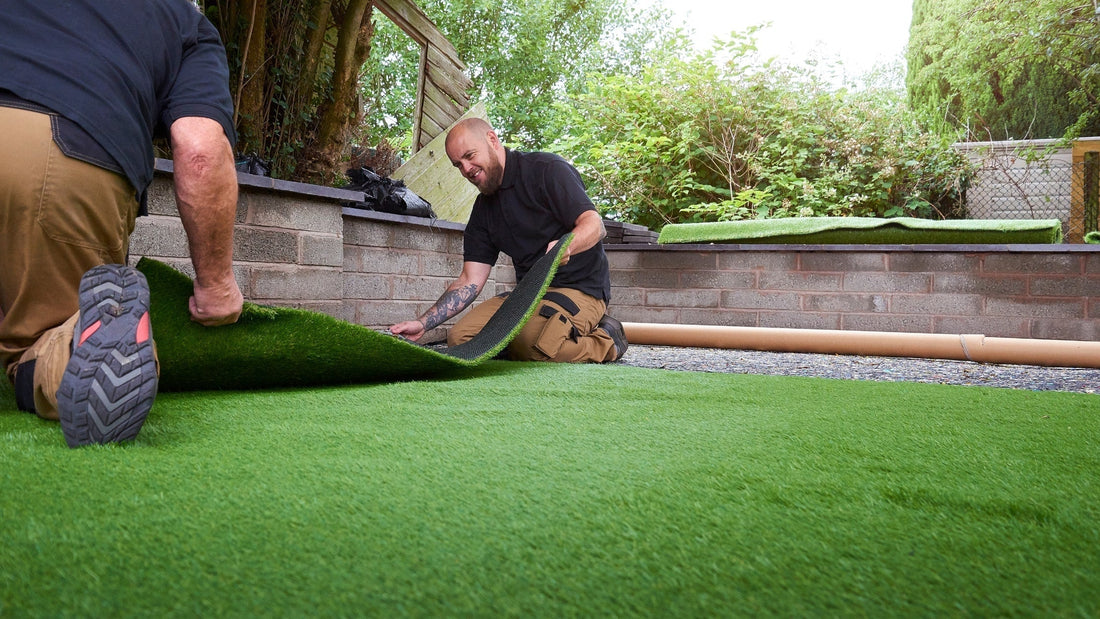
How to Install Artificial Grass: Step-by-Step Guide for a Perfect Lawn?
Quick Links
Step 2: Measure and Cut the Artificial Grass
Step 3: Joining Artificial Grass Sections (If Required)
Step 4: Secure the Artificial Grass
Step 5: Final Touches and Brushing
Artificial grass is an excellent solution for achieving a lush, green lawn without the hassle of regular maintenance. Whether you want to replace a worn-out lawn, upgrade your patio, or create a child-friendly play area, installing artificial grass can be a game-changer. But how do you install artificial grass properly to ensure a long-lasting, natural look?

Let’s take a scrutinised look into the process.
Why Choose Artificial Grass?
Before moving towards the installation steps, it’s important to understand why artificial grass is a great choice:
-
Low Maintenance – No mowing, watering, or fertilising needed.
-
Weather Resistant – Stays green all year, even in harsh conditions.
-
Pet and Child Friendly – Safe and durable for outdoor play.
-
Cost-Effective – Saves money on water bills and lawn care products.
What You’ll Need for Installation
Tools & Materials:
- Artificial grass roll
- Weed membrane
- Sharp utility knife
- Joining tape and adhesive
- Sand or granite dust
- Compactor or roller
- Shock pad (optional for soft surfaces)
- U-pins or galvanised nails
- Turf brush or stiff broom

Step 1: Prepare the Ground
The first and most crucial step is preparing the ground properly.
Clear the Area
- Remove any existing grass, weeds, or debris.
- Use a spade or turf cutter for larger areas.
- Ensure the ground is level and free from large stones.
Install a Weed Membrane
- Lay a high-quality weed membrane to prevent weeds from growing through the artificial grass.
- Secure it using U-pins or small stones.
Create a Stable Base
- Add a layer of granite dust or sharp sand (around 25-40mm deep) to create a firm foundation.
- Use a rake to level the surface and a compactor to press it down.
Why is this important? A stable base ensures your artificial grass remains smooth and well-drained.
Step 2: Measure and Cut the Artificial Grass
Roll Out the Grass
- Unroll the artificial grass over the prepared base and let it settle for at least 24 hours.
- This allows it to adjust to the temperature and reduces creases.
Cutting the Grass
- Use a sharp utility knife to trim the edges to fit the space precisely.
- Cut from the underside to prevent damaging the blades.
- Always leave a small margin to adjust if needed.
Tip: Ensure all grass pieces run in the same direction for a natural look.
Step 3: Joining Artificial Grass Sections (If Required)
If your lawn requires multiple rolls, you’ll need to join them seamlessly.
Align the Grass
- Lay the pieces next to each other, ensuring the pile direction is the same.
- Trim edges so they meet without gaps.
Apply Joining Tape & Adhesive
- Place joining tape between the edges, adhesive side facing up.
- Apply strong outdoor glue evenly over the tape.
- Press the grass down firmly and allow it to bond.
Tip: Use a heavy object or walk along the seam to ensure a strong connection.
Step 4: Secure the Artificial Grass
-
On soil: Use U-pins or galvanised nails every 30cm along the perimeter.
- On concrete/patio: Apply strong adhesive to the edges and press firmly.
Tip: Avoid stretching the grass too tightly, as it may cause wrinkles.
Step 5: Final Touches and Brushing
Add Kiln-Dried Sand (Optional but Recommended)
- Spread a thin layer of kiln-dried sand to help the grass stay in place.
- Brush the sand into the grass fibres using a stiff broom.
Brush the Grass Upright
- Use a stiff broom or power brush to lift the fibres for a natural appearance.
- Check for any loose edges and secure them if needed.
Common Questions About Artificial Grass Installation
1. Can I install artificial grass on concrete or decking?
Yes! Just ensure the surface is clean and use adhesive or double-sided tape to secure the grass. Consider adding a shock pad for comfort.
2. How do I maintain artificial grass after installation?
Brush regularly to keep fibres upright.
Remove leaves and debris using a blower or broom.
Rinse with water occasionally to remove dust and dirt.
3. Does artificial grass require drainage?
Yes, but most artificial grass has built-in drainage holes. A well-prepared base with crushed stone or sand will also help with water runoff.
4. How long does artificial grass last?
High-quality artificial grass can last 10-15 years with proper maintenance.
Conclusion
Installing artificial grass may seem like a big task, but with proper preparation and attention to detail, you can achieve a flawless, natural-looking lawn that lasts for years. By following these steps, you’ll not only save on maintenance but also enjoy a beautiful, green garden all year round.
Ready to transform your outdoor space? Start your artificial grass installation today!







